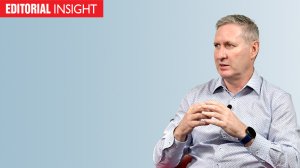Given the many moving parts in play currently within the electricity industry, there is a real risk of becoming distracted from what is truly important.
Developments over the past few months alone have been enough to leave one’s head spinning.
Besides the release of the latest edition of the Integrated Resource Plan, IRP 2025, major regulatory issues have come to the fore.
The most high-profile of these, undoubtedly, was the admission by the National Energy Regulator of South Africa (Nersa) of a serious miscalculation in its most recent adjudication of Eskom’s allowable revenue.
The upshot was a R54-billion settlement that, if implemented (there is currently a legal intervention to stop it), will result in even higher tariffs than those approved previously for the coming two years.
But the settlement is but one of several big regulatory developments under way, with Nersa also looking to finalise the rules for traders after Eskom stayed its legal objection to the issuance of some licences.
It is also adjudicating the National Transmission Company South Africa’s application for a market operator licence ahead of the launch of the South African Wholesale Electricity Market (SAWEM), possibly next year.
Then, it will need to apply its mind to the SAWEM market code, amid concerns over the way the fixed and variable cost components will be treated, which could undermine the effectiveness of the market.
This, while also carrying out its routine licensing, registration and tariff assessments.
Then, there are the big issues related to Eskom, from an unbundling process that seems to be either stalling or being made less ambitious, to ongoing disquiet over its application of grid-access rules and the pace of the grid roll-out.
There are also concerns that the State-owned company’s plan for the establishment of a standalone renewables business may be anticompetitive, particularly in relation to grid access.
Not to mention the threat posed by burgeoning municipal arrear debt, ghost vending and chronic electricity theft.
The municipal distributors, meanwhile, are in a highly vulnerable position, with questions about constitutional rights and responsibilities posing an obstacle to the restructuring that is now sorely needed.
In such a context, it is naturally difficult to see the wood for the trees, and it is instinctual to retreat towards the known rather than journey into the unknown.
In many ways, the IRP 2025 reflects this instinctual tendency by seeking to replicate rather than overhaul the country’s historical generation structure, only with a few different technologies.
To embrace a future that carries much promise, but also known and unknown risks requires more than courage.
It requires vision.
Here, South Africa is falling desperately short.
There is no systemic view of where the electricity supply industry should be going so as to place South Africa on a pathway that is growth- and job-rich and responsive to the economic, environmental and health risks posed by the business-as-usual approach.
Until such a vision emerges, we should all prepare for yet more head spinning.
EMAIL THIS ARTICLE SAVE THIS ARTICLE ARTICLE ENQUIRY FEEDBACK
To subscribe email subscriptions@creamermedia.co.za or click here
To advertise email advertising@creamermedia.co.za or click here











